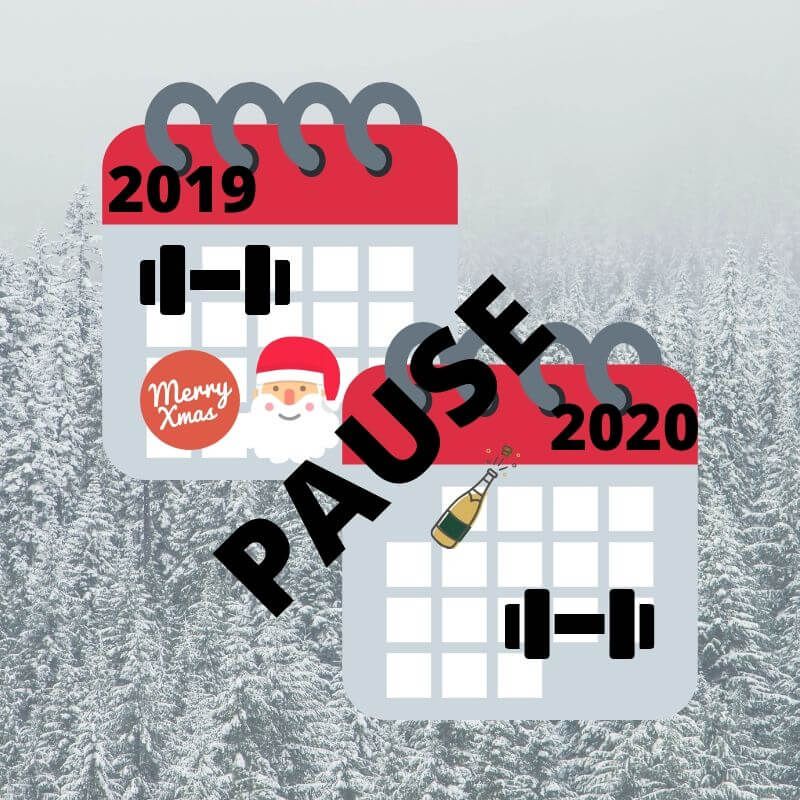
How do I get back into training after a break from training?
Welcome back to my blog. I wish you a happy 2020 and hope you slipped into it well, as they say. Like me, do you get back into training after a break from training?
You surely know that too: You have trained more or less diligently throughout the year, also paid a little attention to your diet, but then they come Christmas holidays and New Years Eve. The last gifts want to be bought, at Christmas you sit with your family (sometimes have to travel back and forth), eat properly (sometimes larger quantities and unhealthy) and enthusiastically celebrate the New Year. In addition to the already stressful time around Christmas and New Year, I also have two birthdays. If you are not a top athlete who competes and where training is not just fun and calling but also a job, that is not a major problem. And that will be the case with most of us. However, you are now completely thrown out of your routine by this training break. I was last on December 20th. in the gym, which corresponds to a training break of almost 3 weeks. How do I get back into training now? In this post I will explain to you how I approach the matter and get back into my training in a structured manner.
If you don't want to wait that long or if you want to read my reasons for this training in more detail, click in the content on "The exercises after the training break".
Starting position
The past year without a training break
I have the past year trained regularly without major breaks in training, usually after a 4 split every 7-9 days. I actually only took breaks of several days when I was busy at work or had a cold. So my body is used to regular training.
In addition, I have one opinion on my diet adequate intake of Protein or protein respected. With a body weight of 84-88 kilograms (increasing after the summer) I consumed about 160-200 grams of protein a day, what around 2 grams per kilogram of body weight corresponds. So my muscles had enough building material for maintenance and growth. If you want to know a little more about protein, read mine items "Protein - The stuff your muscles are made of!".
At the beginning of the year
My weight has not changed since my last training; on my last training day on December 20, 2019 and my first training on January 7, 2020 it was 88 kilograms. Of course, I noticed that the muscles felt a little softer and the body is a little softer overall. So it should have been a little muscle down, but a little body fat added.
I've only been in the past 3 weeks partially paid attention to my diet. I did eat more on the Christmas holidays and tried to eat protein where possible. But on a short break over New Year's Eve, I ate a little less and less structured.
I am currently completely healthy, so I can start training straight away.
preparation
One day before my first training session on 6.1. started my Increase protein intake slowly. I also ate half a cup of Skyr and increased my food portions. In addition to my regular food, I fried two eggs. No rocket science, but the body should slowly get used to a larger amount of food and protein again.
I also have mine Increased drinking amount. If I can, I usually take around 5 liters of fluids (water, coffee, tea, etc.) throughout the day. So that all body functions function better again, I have now drunk more again.
On the day of training, the 7th of January, I continued to drink enough and consume protein. I also have about an hour before training, 5 grams of creatine taken to me. This is supposed to improve the energy supply in the muscle.
Consideration for training after a long break from training
So how do I start this training year? Do I just continue with my normal split? A brief preliminary consideration:
The human body, and I write this in almost every one of my posts, is a marvel of efficiency. Some claim he is lazy and needs to be forced to build muscle. But that's not true. Your body wants and will build muscle when it receives a stimulus from stress and the necessary building materials to build muscle. Why am I explaining this again? In the last 3 weeks or so I have not exposed my body to any stimuli that would have told it: Maintain your built-up muscles and build new ones. Therefore my body has started to slowly break down muscles. Not very much, of course, but in such a way that I notice it. He thought I no longer need the muscles - so they can slowly go away. So now we have to tell him: The training break is over! You need the muscles - build them up again!
I usually do a 4 split every 7-9 days. I have found for myself that I regenerate well in this time frame and can also use the individual muscle groups in a mixture of heavy training combined with volume through the split. Since my body is no longer used to this intensity, I take a different approach to getting back into training:
Maximum pump in as many muscle groups as possible through adapted full-body training.
Maximum pump with full body training
In order to start a training rhythm again after a long break from training, I prefer a pump training for the whole body. The cornerstones:
- As every muscle group should be trained
- Only a maximum of 40-50% of the actually usual training weight
- Instead 3 sets of 30 repetitions each (with a few exceptions)
- Supersets are used where possible and sensible
Since the body is no longer used to the heavier weights and the strain on a single muscle group due to a split, I start with this pump training. Every large muscle group is thus addressed and stimulated after the longer training break. The lower weight is much gentler on the joints, at the same time the high number of repetitions per muscle (3 times 30 for a total of 90) generates a strong pump, i.e. a lot of blood with building materials (protein, minerals, trace elements) is sent into the muscle .
The effect of pumping is further enhanced by the use of supersets. Whenever possible (when the gym is not so full and the exercises offer themselves) I like to train a muscle and its antagonist one after the other. So I kind of form a larger sentence from two individual sentences. Only then do I take a longer pause in sentences. This should be long enough to allow you to recover, but at the same time as short as possible to generate a stronger pump.
If you'd rather start with a less intense and volume-heavy full-body workout, read my post "Great success with this full-body training plan".
The exercises after the training break
I will now introduce you to the exercises that I did during my first training on 7.1. in that same order. The selection tends to go from larger to smaller muscle groups and tries to cover as broad a spectrum of the body as possible.
1. Legs - leg press
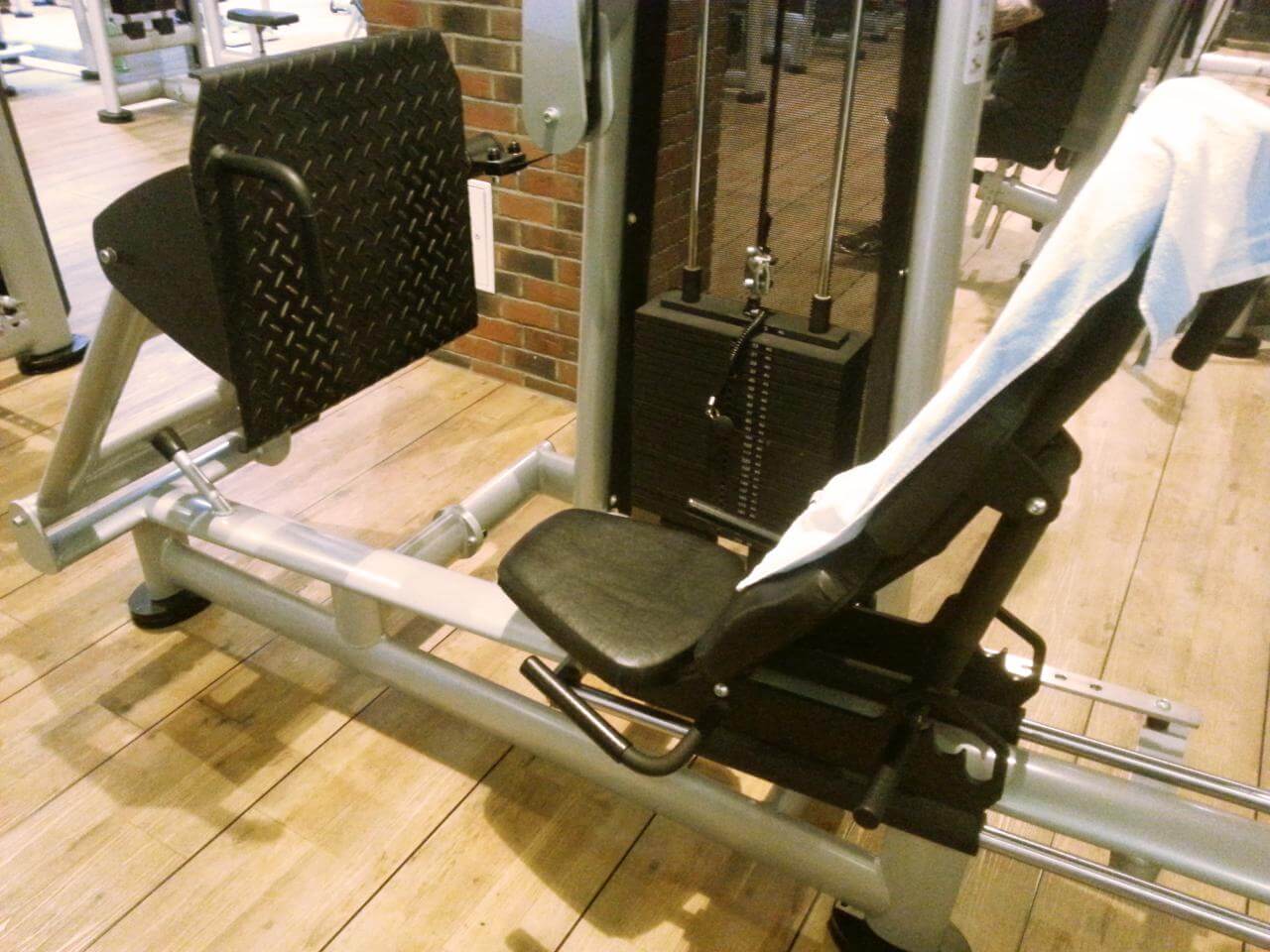
Leg press
I start training with the leg press. The gluteal muscle is the largest muscle in the human body; the legs are another very large muscle group. It therefore makes sense to start with this large muscle network first after the training break. 3 sets of 30 repetitions each, the first set a little easier, the second a little harder, the third just like the first.
2. Back / chest superset: lat pulldown, chest press, rowing machine
As a second exercise, I choose a superset consisting of 3 exercisesthat I do one after the other. I start with the lat pulldown from above with a wide grip, the second exercise is the chest press, the last exercise is the rowing machine. Lat pulldown, chest press and rowing machine are trained one after the other with as short a break as possible, then the sentence break takes place. Again I train a total of 3 sets per machine with 30 repetitions, the second set a little more difficult. By combining pulling and pushing exercises, the muscles that are currently not being used can recover a little and the pumping effect in the muscles is increased. Try it out.
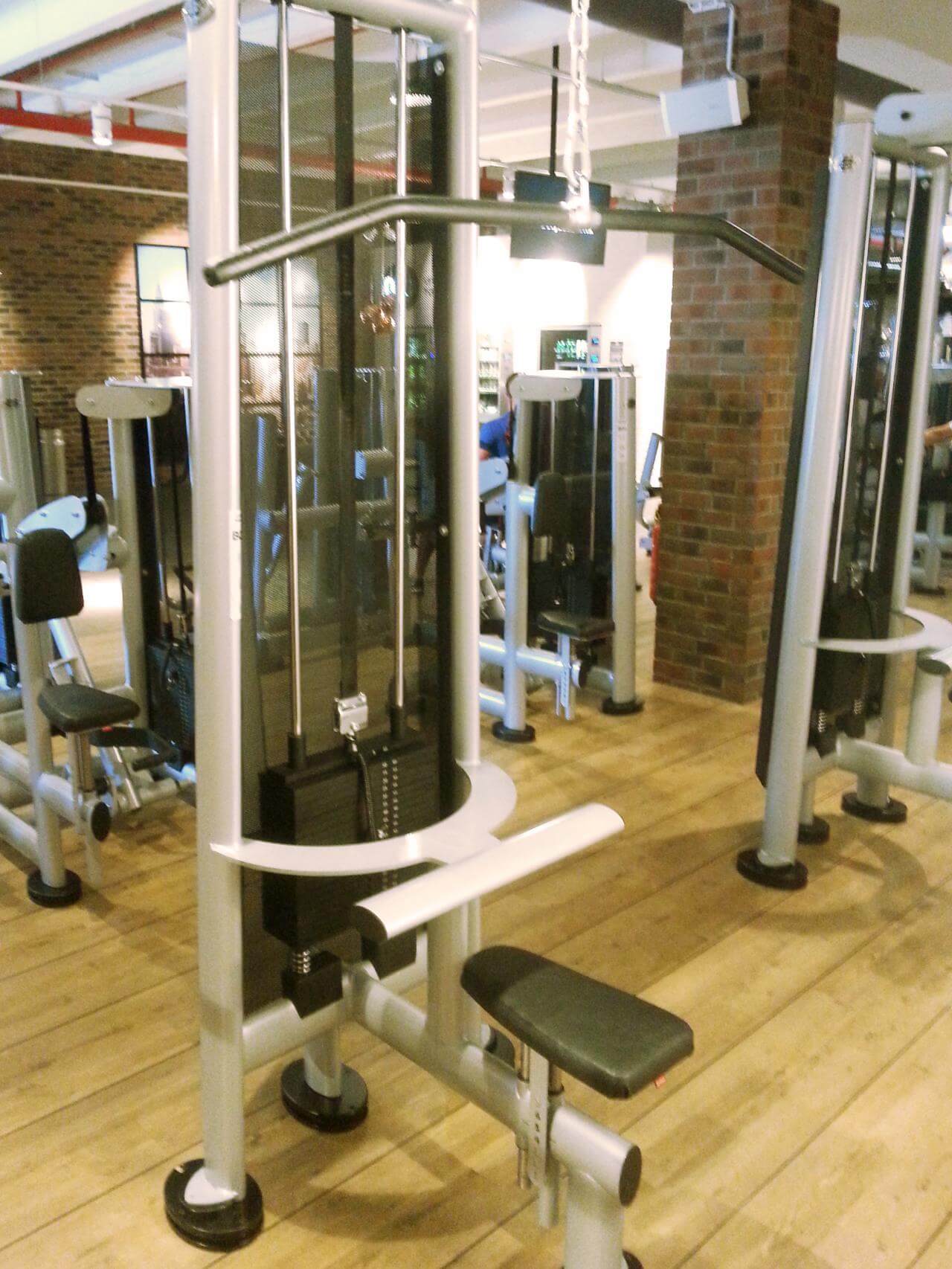
Lat pull wide
I start with the broad grip lat pulldown. Here I pull the bar in front of the body towards the sternum, for many people this is gentler on the shoulder than a pull behind the head. This exercise strengthens the lat and the width of the back.
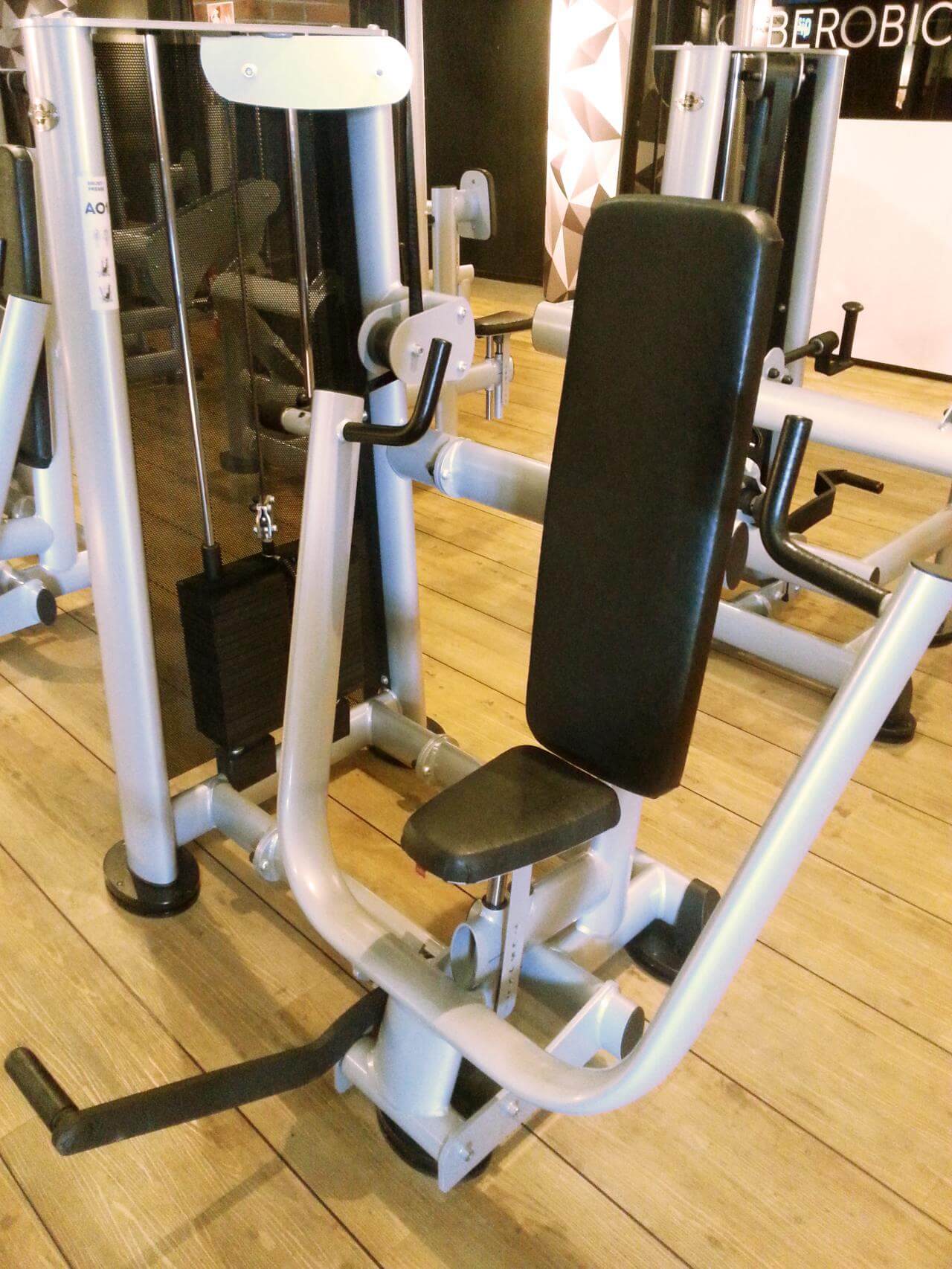
Brustpresse
The chest press is the second exercise. I'm not pushing my arms all the way through. At the beginning and end of the movement, I make a short stop so that I don't swing. The chest press naturally trains the chest.
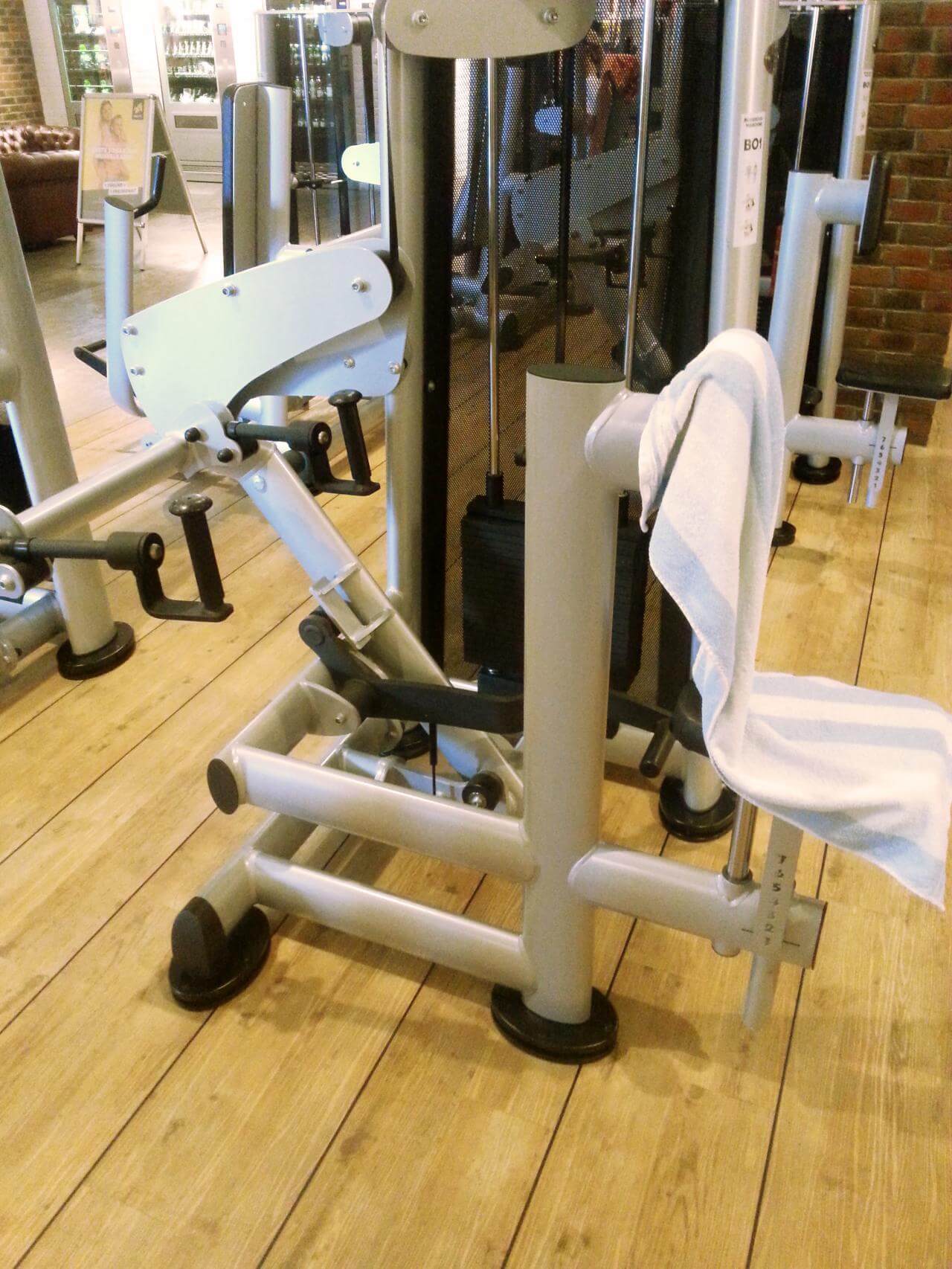
Rowing machine
The back has recovered a little and can be used while rowing. The rowing machine targets the thickness of the back and the muscles between the shoulder blades more.
3. Legs - Superset: hamstrings, leg extensions, standing calf raises
In the meantime my legs have recovered a bit, so that I third exercise again choose a superset consisting of 3 exercises: hamstrings, quadriceps and calf raises while standing. With a combination of these exercises, you can train the individual components of your legs in a more targeted manner:
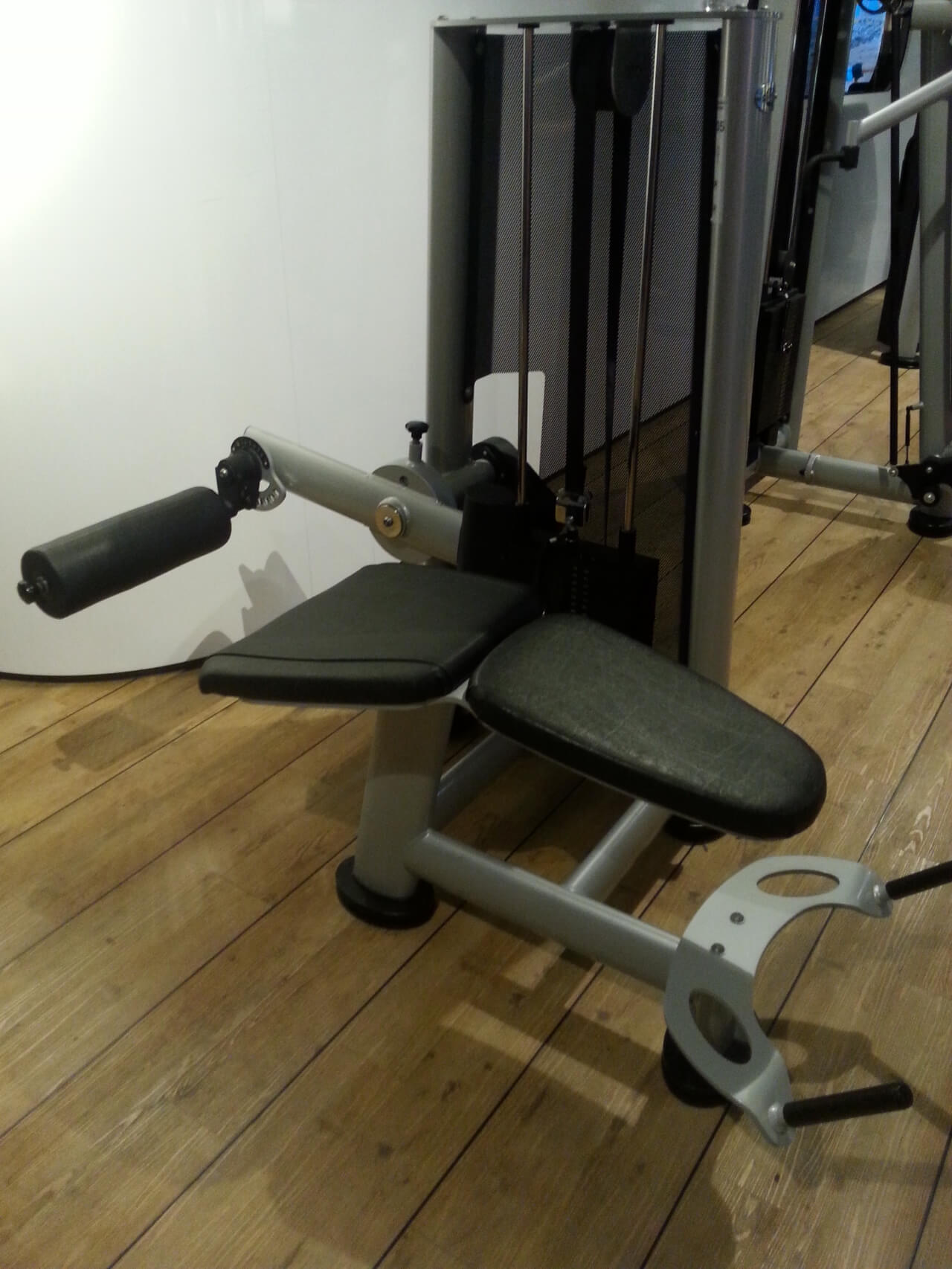
Hamstrings
So that my hamstrings still have the most strength and that I use them in a concentrated manner, I start with this exercise. Many gym exercisers focus primarily on the front of the leg, called the extensor. But would you only train your triceps but not your biceps?
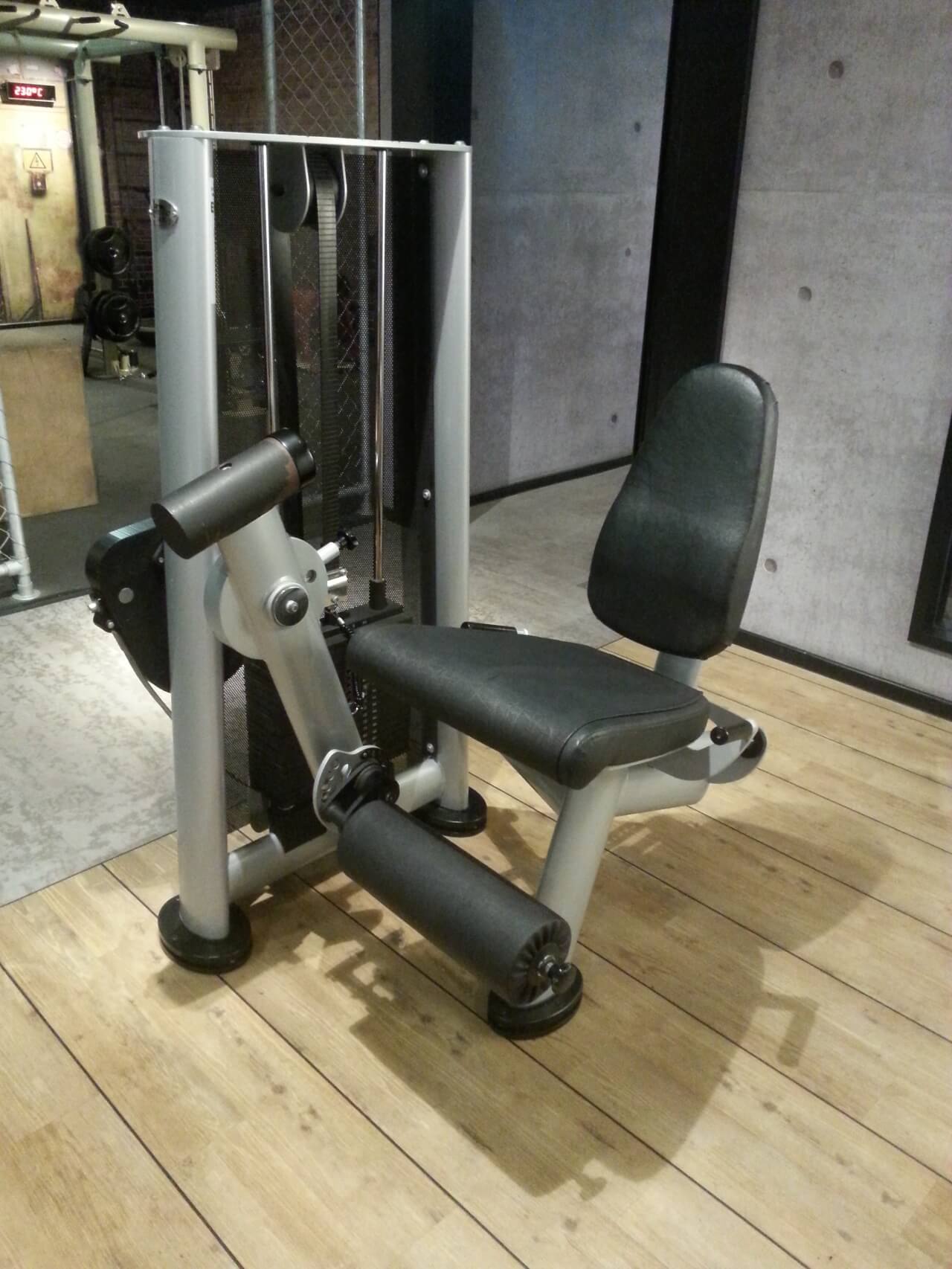
Leg stretcher
Afterwards, of course, I also train the front of the leg, the leg extension. With its various muscle strands, it mainly takes care of the thickness of the leg and gives it strength and a sporty appearance.
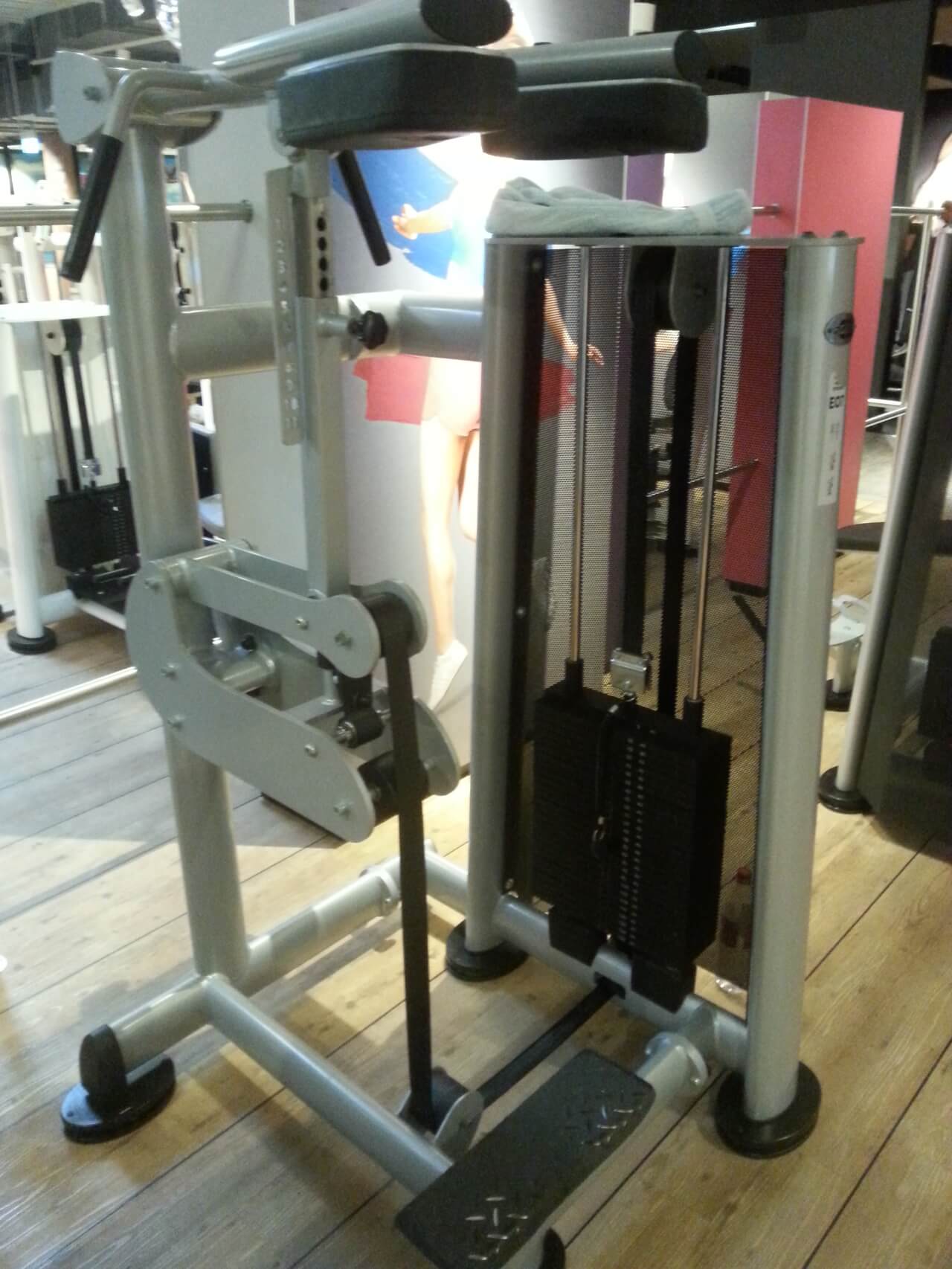
Standing calf raises
Calf raises are hugely important to me - especially if you have naturally thin calves like me. After all, a developed upper arm with a very lean forearm would look strange too. A higher volume with less weight helped me a lot in developing my calves.
4. Back / Chest Superset: Butterfly, Reverse Butterfly
In the meantime, the chest and back muscles have sufficiently recovered from the strenuous 3 superset once again targeted with a superset of 2 exercises: the first exercise is butterfly, the second is reverse butterfly.
With the first superset for the chest and back, we already moved quite a bit of volume, but with these two exercises we train the muscle groups at a different angle: before pressure and tension, now more squeezing and pulling apart.
This makes a difference for the muscles and it always makes sense to train muscles with as many different movement sequences as possible:
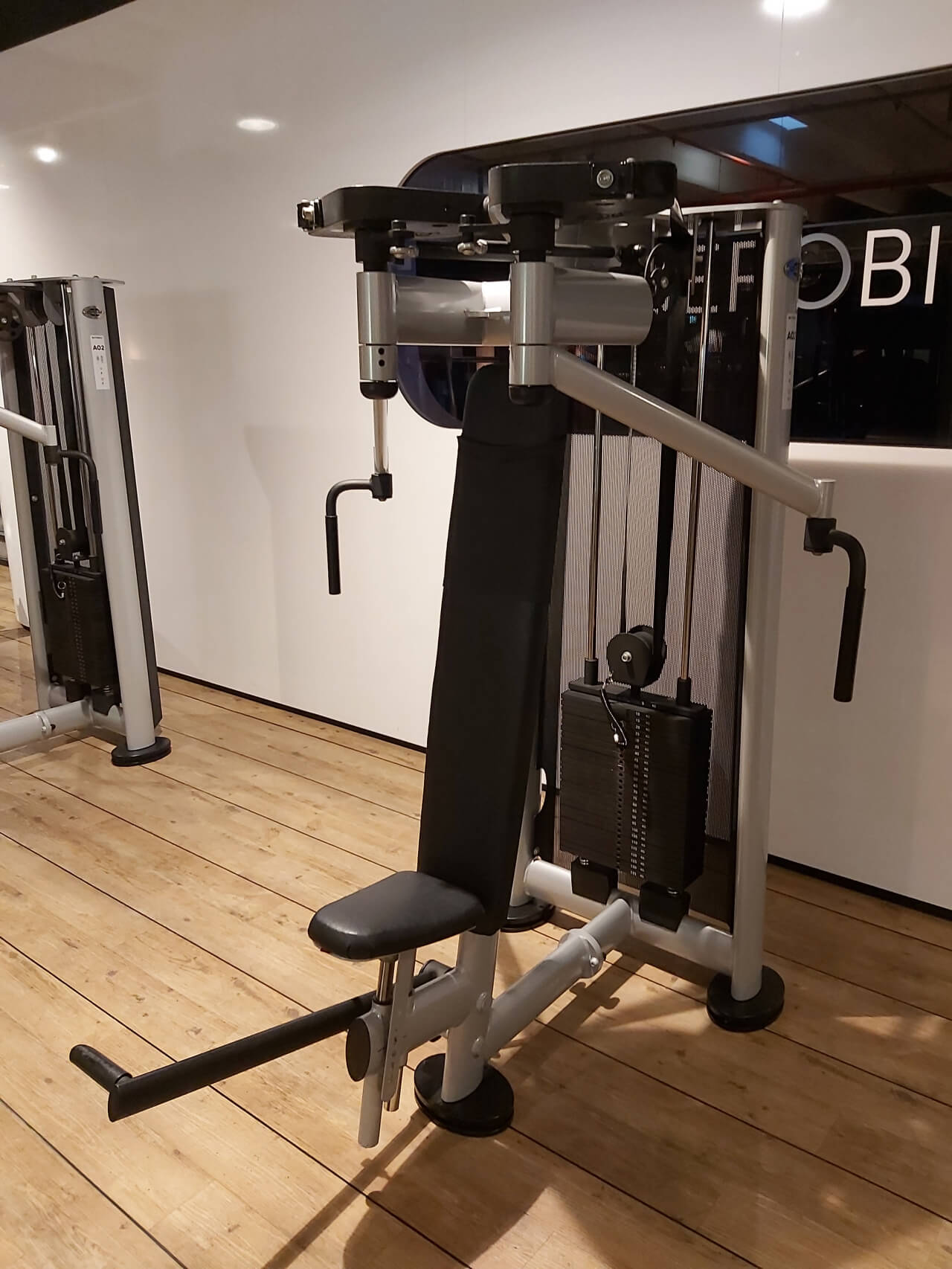
Butterfly
With the butterfly you train your chest again in a different way: While the movement of the chest press pushes the weight forward, here you press the handles in front of your body with only slightly bent arms. So there is increased pressure on the inside of your chest muscles.
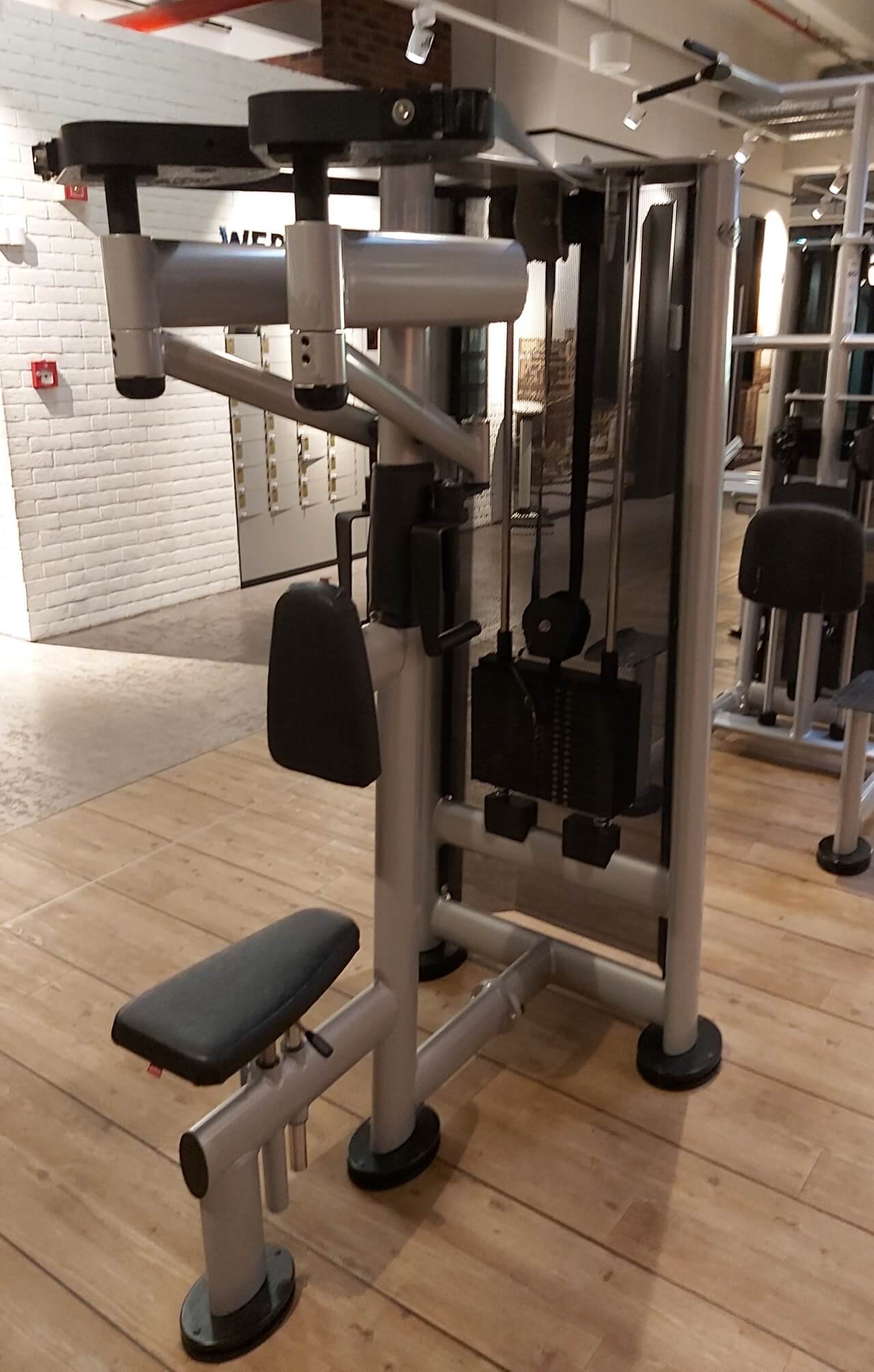
Reverse Butterfly
I use the reverse butterfly according to the same logic: If you have previously pulled a weight from front to back, you now pull the handles apart to the sides with your arms. In principle, the same muscles are addressed as before, but the angle and type of pull and strain are different.
5. Arms - Superset: Triceps pushdowns (hammer / underhand grip), concentration curl
Your legs, back and chest are now adequately trained. Next I turn to the poor. While many discopumpers train their biceps more, most of them now know that the triceps in particular make the arm thick. So I work out both biceps and triceps. I start with 5 super sets of triceps (alternating pushdowns with hammer grip and underhand grip), then I complete 5 sets of concentration curls. I vary the grip on the triceps superset to achieve different levels of stress on the triceps.
In contrast to the previous exercises, I only do 10 repetitions per set for the exercises for the arms, which is completely sufficient for me for a good pump. For this I take 50-70% of my maximum training weight.
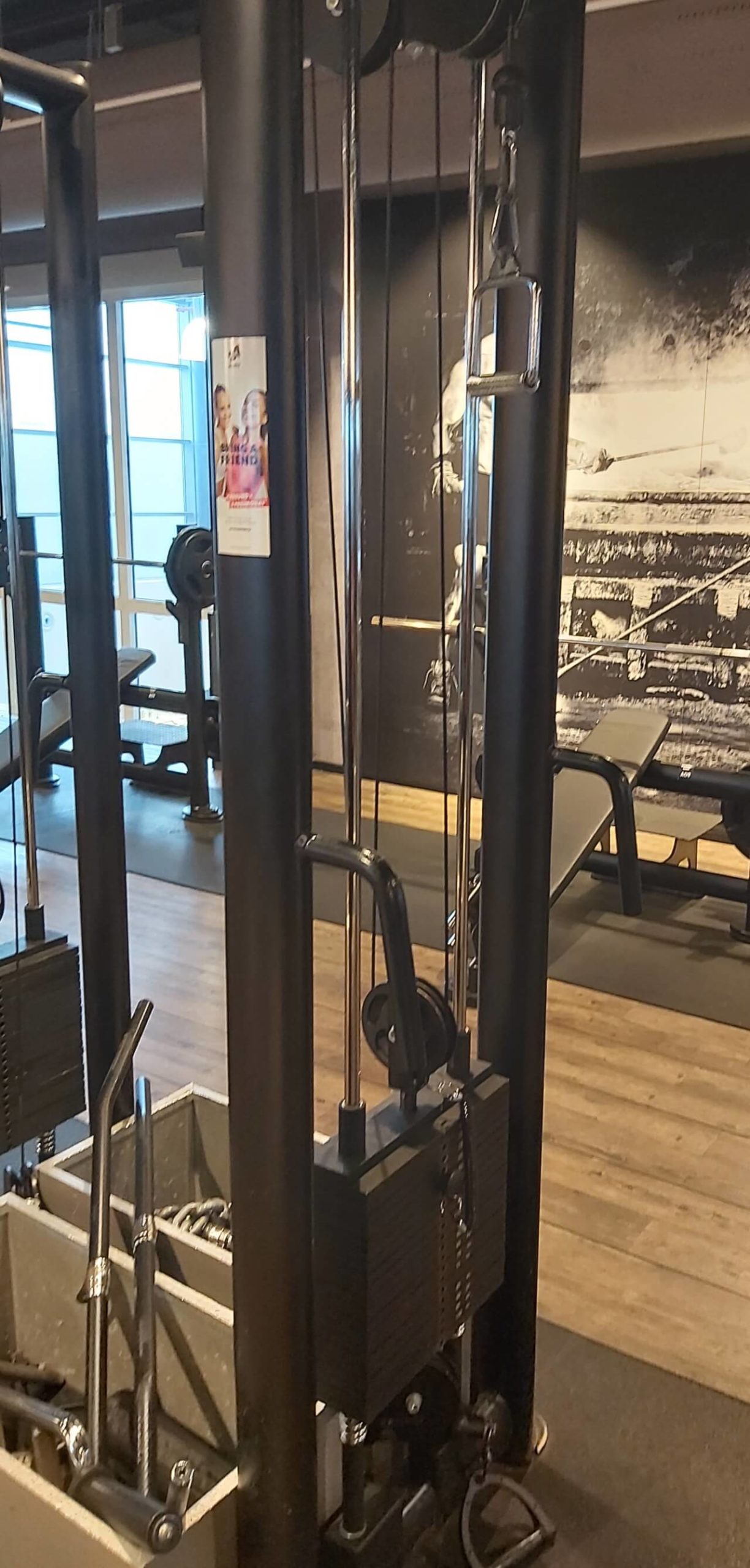
Trizeps pushdowns Hammergriff / pushdowns underhand
I take the first exercise for the triceps the rope so like holding a hammer. The hand is vertical, so the thumb is pointing up at the beginning of the exercise.
In the second exercise for the triceps I attached a handle to the rope and grab him from below. So before I close my hand, the palm is facing up.

Concentration Curls
Everyone knows this exercise for the biceps from films or bodybuilding videos: You sit on a bench with your legs relatively wide apart, place your elbow against the inside of your knee or thigh and move the weight with your biceps from bottom to top . Concentration curls increase the bulging of the biceps. However, whether you will have an outstanding bicep tip is genetically determined. You can only influence that to a limited extent.
6. Lower back - back extensor
So far I have mainly trained the upper and middle parts of the back. As a final exercise, I do a few sets of back extensors for the lower back.
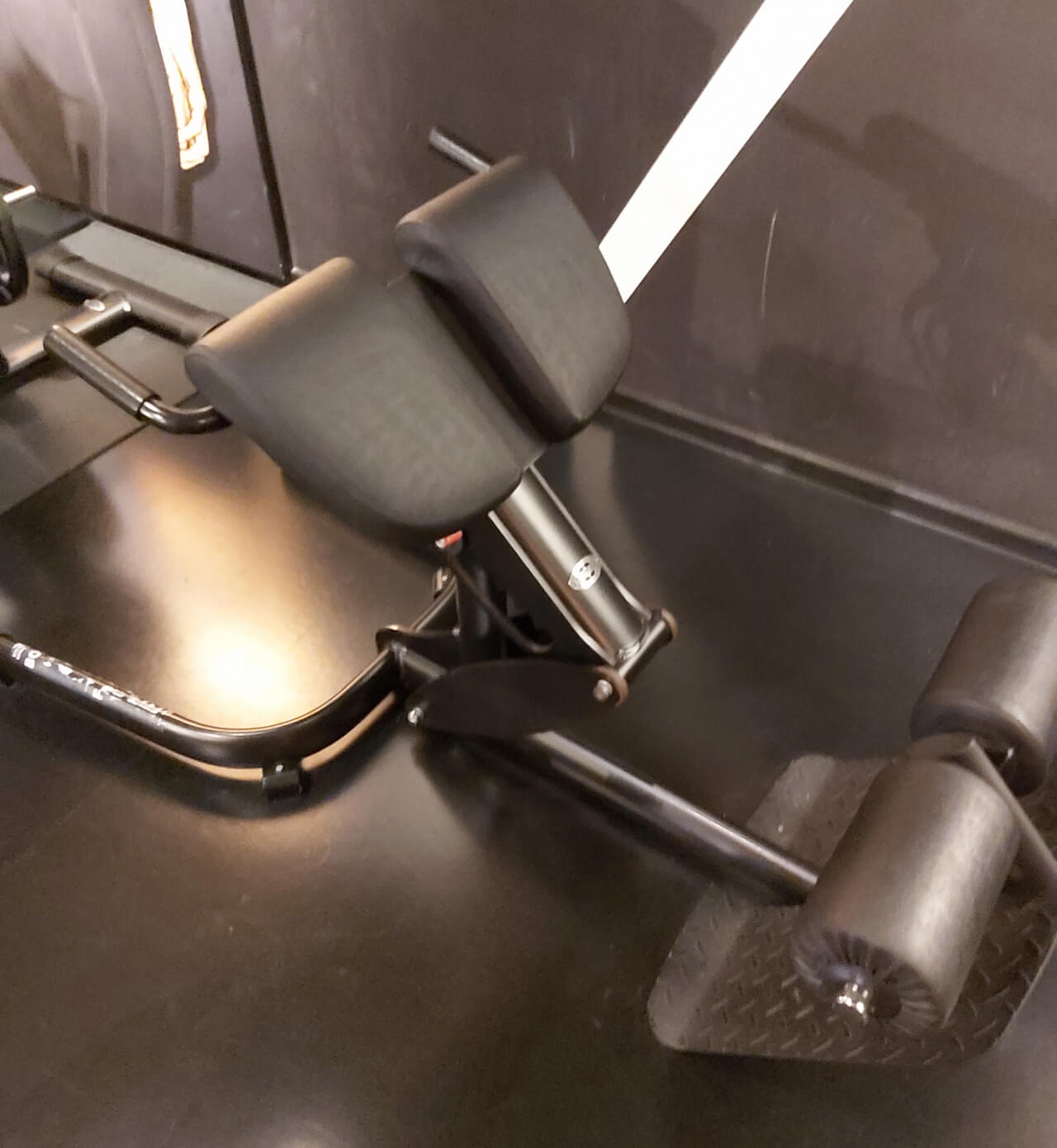
Back extensor
Since my back extensor is running fast (so a lot of blood flows in and gets a good pump), 3-4 sets of 10-20 repetitions are enough for me.
7. Abdominal superset: crunches, lateral leg raises, leg raises, lying down bike
Finally, I will focus on the opponent of the back extensor, i.e. the stomach. Together with the back extensor, the abdominal muscles ensure a stable trunk and prevent back problems. In addition, a well-trained stomach naturally looks very good.
I do a single superset consisting of the exercises
- 50 repetitions of crunches
- 2 times 25 repetitions per side leg lateral raises
- 50 reps leg raises
- 50 repetitions of lying down cycling
I start with crunches for the straight mid-abs. In contrast to sit-ups, only the shoulders are raised from the floor, the lumbar vertebrae are always in with the floor. This is often gentler on the lower back.
Immediately afterwards, I do leg lateral raises. I lie on one side, prop up my elbows and pull both legs diagonally towards my upper body. This is increasingly targeting the obliques.
The third exercise is leg raises: I lie on my back and position my hands under my bottom or pelvis. This is to prevent my pelvis from tilting, which can cause back problems. Leg raises primarily target the lower part of the straight abdominal muscles.
Last but not least, I finish my training with a lying bike. Lying on my back, I always alternately bring the left elbow to the right knee and the right elbow to the left knee. This again targets parts of the straight and oblique abdominal muscles.
The next days
After this strenuous full-body pump training, the body should regenerate for a day after the previous long training break. As a result, the next day is free of training. I'll keep increasing my protein intake and maybe do some light stretches. Only lightly, because the muscles are naturally exposed to high stress anyway due to the unusual strain. Slight muscle soreness is certainly normal, but it shouldn't be so heavy that you can barely move. In this case I would rather plan two days for regeneration.
On the third day I do the pump training described here again. However, I vary the order of the exercises. In principle, the training takes place in exactly the opposite order, I only train my arms at the end. In this way, the muscles are immediately surprised again and do not get used to the sequence of the exercises. Due to the fact that I finally train my arms, I can do the exercises for the back in the best possible way without pulling aids.
Summary
The training program described here serves as a return to regular training after a long break from training. In my case, the training break lasted almost 3 weeks over the Christmas holidays and New Year's Eve / New Year. By trying to train as many different muscle groups as possible with maximum pump, joints are spared and the muscles are prepared again for the stress of a heavier training in split. Due to the memory effect, your body will quickly rebuild your muscles if you have enough protein and fluid.
As with any workout, you should always drink enough and watch your breathing. Breathe in when you are relieved, exhale when you are exerting yourself, avoid pressure breathing. And since you're pumping with light weights, don't throw the weight around with momentum. Make it as controlled as possible with the muscle that you mainly want to train.
It is of course advantageous to start this pump training after a long break from training if you have trained regularly for the months before. But even if this is not the case, I think that you can surely get useful tips from this post for your return to training. I wish you every success in your training, a good pump and every success in achieving your goals!
Did you like this article, have suggestions or want to say something?
Follow me on social media and write a comment! I look forward to your opinion.


You might be interested in that too
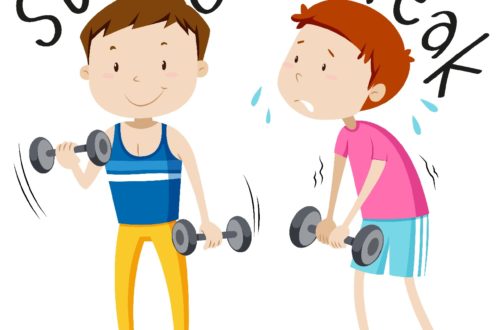
Bodybuilding: time to dumbbells!
7. June 2019
Arnold Classic 2020: Results and Summary
March 10, 2020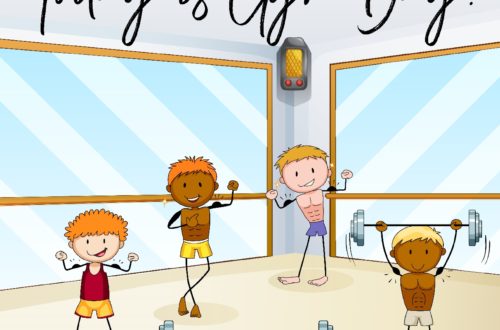
Fitness studio: the most important tips for beginners!
14. June 2019Latest posts
- Tampa Pro 2020: Results and Summary 18. August 2020
- Arnold Classic 2020: Results and Summary March 10, 2020
- How do I get back into training after a break from training? January 9, 2020
- Mr. Olympia 2019: Results and Summary 14. September 2019
- Mr. Olympia: The most important competition in bodybuilding 18. August 2019
